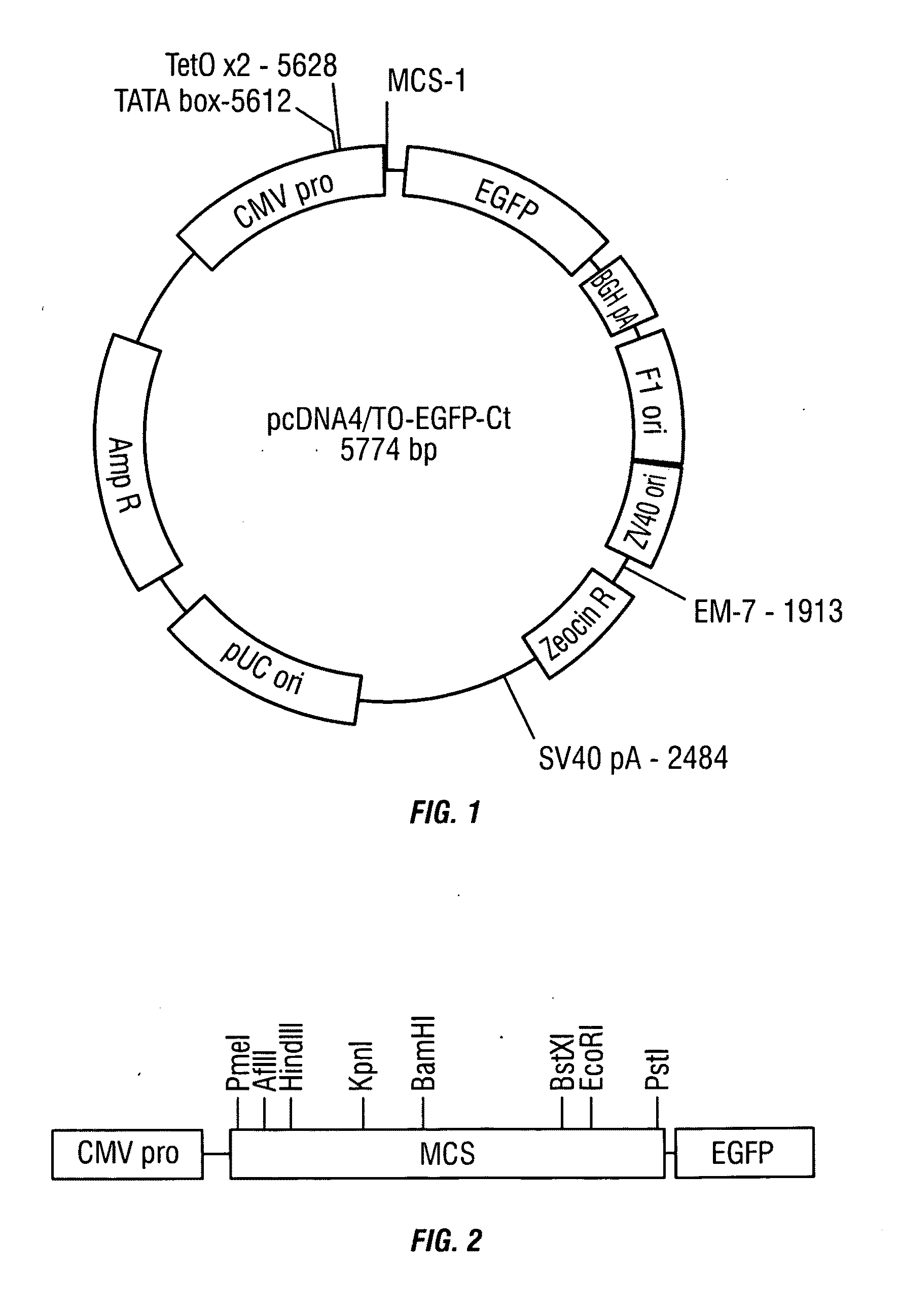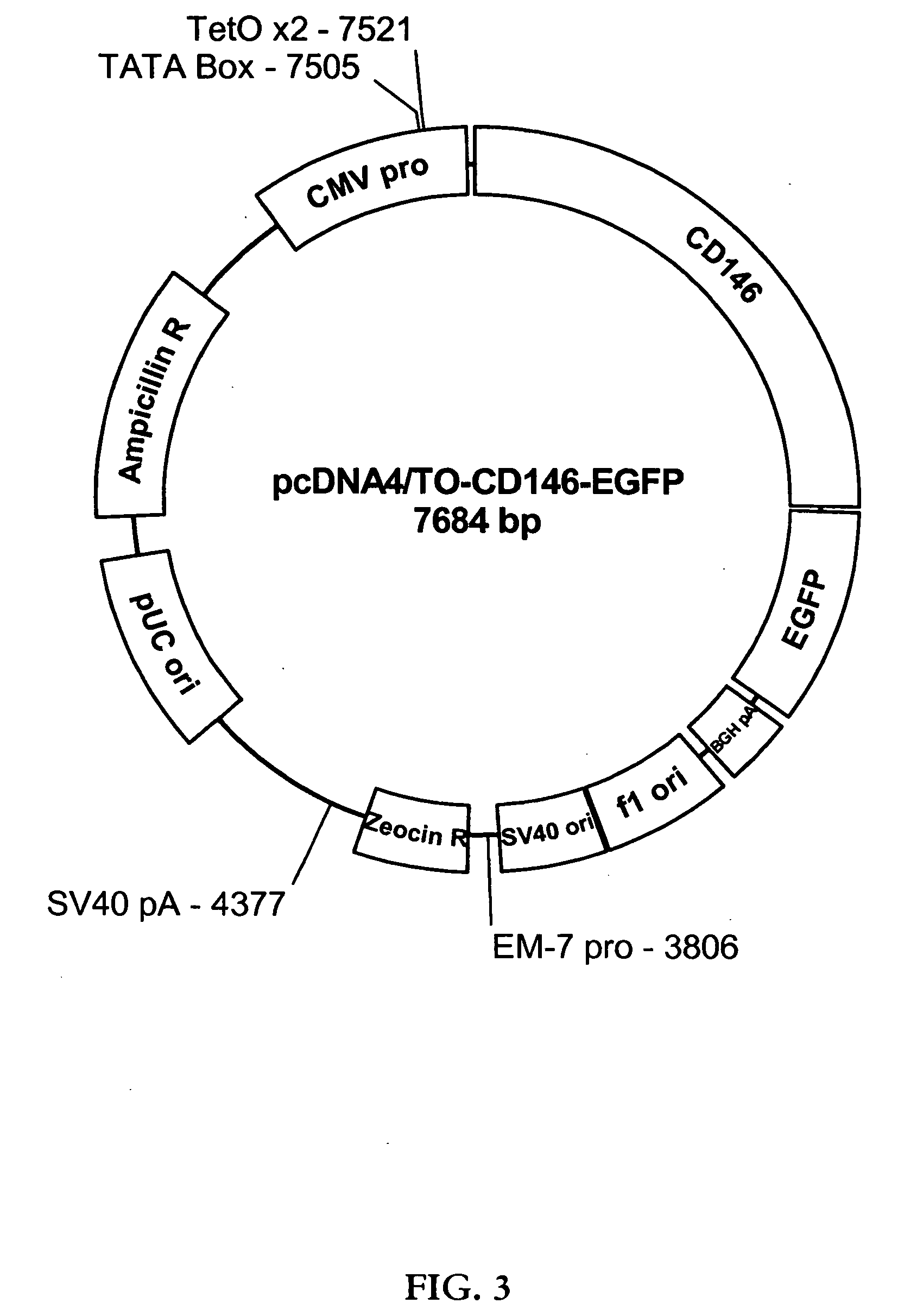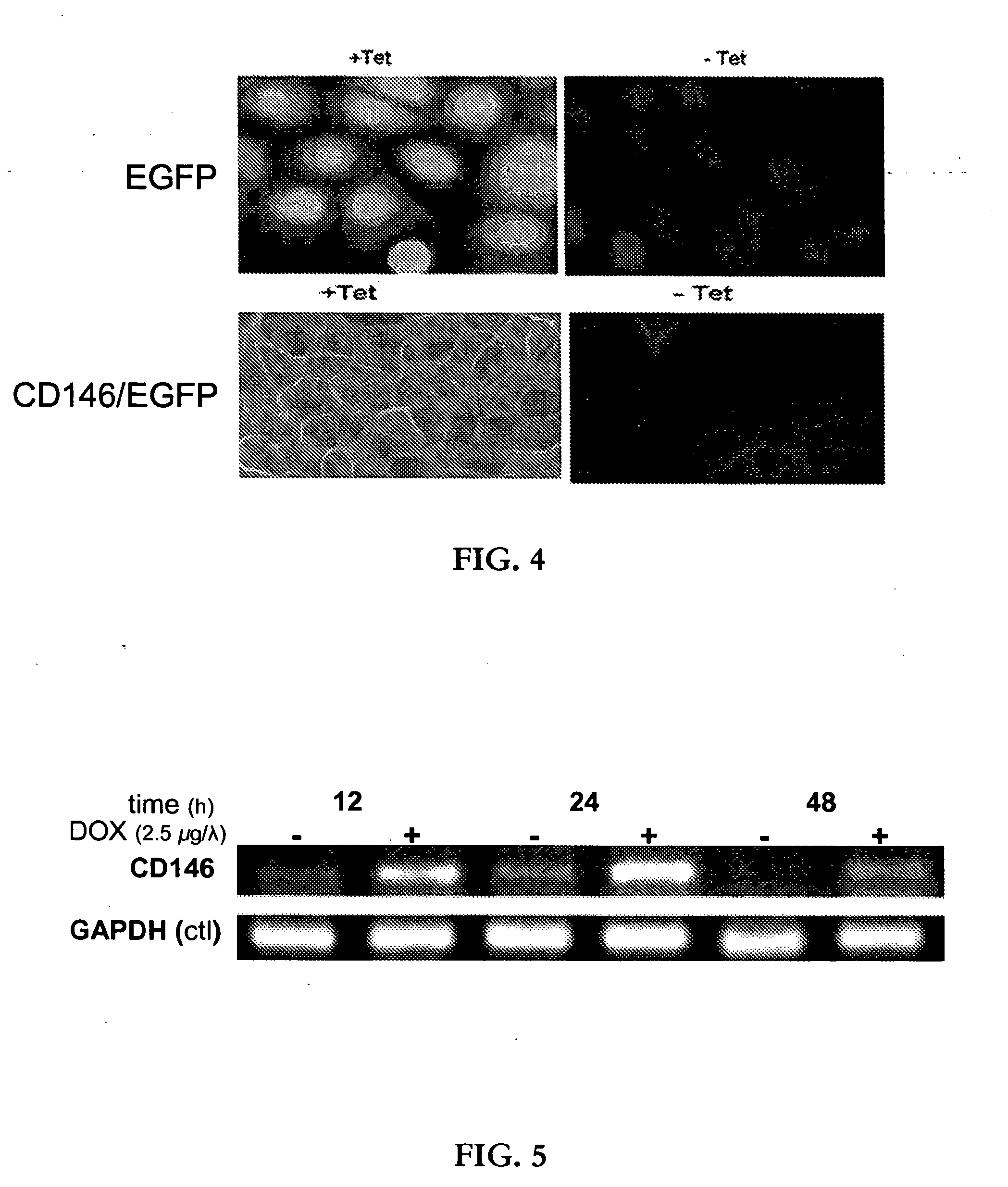Inducible fluorescently-tagged protein expression system
a protein and fluorescent technology, applied in the field of recombinant dna, can solve the problems of obstructing the promoter sequence, affecting the expression of genes and proteins, and affecting the effect of recombinant dna quality,
- Summary
- Abstract
- Description
- Claims
- Application Information
AI Technical Summary
Benefits of technology
Problems solved by technology
Method used
Image
Examples
example 1
Construction of the pcDNA4 / TO-EGFP-Ct Vector
[0094]The gene encoding the enhanced green fluorescent protein (EGFP) was amplified from pIRES vector using forward primer EGFPC-EcoRV-F (SEQ ID NO:1) and reverse primer EGFPC-XhoI-B (SEQ ID NO:2). The forward primer introduced an EcoRV site at the 5′ end of the amplified gene sequence, and the reverse primer introduced an XhoI site at the 3′ end. The PCR product corresponding to the expected molecular weight of the EGFP gene was isolated via agarose gel electrophoresis, and purified using a QIAquick Gel Extraction Kit (QIAGEN Inc., Valencia, Calif.) according to the manufacturer's directions, resulting in purified EGFP gene sequence. The purified EGFP gene sequence was digested with 5 units of each of the restriction endonucleases EcoRV and XhoI, in 1× NEBuffer 3 (50 mM Tris-HCl, 10 mM MgCl2, 100 mM NaCl, 1 mM dithiothreitol, at pH 7.9) with 100 μg / mL bovine serum albumin (BSA) for two hours at 37° C. (enzymes, buffer, and BSA from New En...
example 2
Isolating Full-Length CD146 cDNA
[0095]CD146, also known as melanoma cell adhesion molecule (MCAM or Mel-CAM), melanoma-associated glycoprotein MUC18, S-Endo-1, or A32, is a cell surface glycoprotein. It is a member of the V-V-C2-C2-C2 subfamily of the immunoglobulin (Ig) superfamily of genes, where “V” refers to a variable region of the polypeptide chain, and “C2” refers to a characteristic constant region. CD146 has five Ig-like extracellular domains (two N-terminal V-type domains followed by three C2-type domains), a transmembrane region, and a comparatively short cytoplasmic tail containing 61 amino acids. It functions as a calcium (Ca2+) independent cell adhesion molecule, and is involved in heterophilic cell-cell interactions. In adult organisms, CD146 is associated with malignant transformation and neoplastic tumor progression.
[0096]Expression of CD146 is restricted to endothelial cells, although in the presence of endothelial cells a small percentage of neuronal stem cells ca...
example 3
Creation of pcDNA4 / TO-CD146-EGFP Vector
[0100]Full-length CD146 cDNA was excised from pCR®-XL-TOPO®-CD146 by restriction digestion with the restriction endonucleases HindIII and EcoRI in 1× NEBuffer 2 (50 mM NaCl, 10 mM Tris-HCl, 10 mM MgCl2, 1 mM dithiothreitol, pH 7.9). Similarly, pcDNA4 / TO-EGFP-Ct vector was digested with HindIII and EcoRI in 1× NEBuffer 2. The pCR®-XL-TOPO®-CD146 and pcDNA4 / TO-EGFP-Ct restriction digests were resolved via 1.0% agarose gel electrophoresis, and bands of the appropriate molecular weights were isolated. The isolated bands were purified using a Quick Gel Extraction Kit (Invitrogen, Carlsbad, Calif.), according to the manufacturer's directions, and the digested CD146 sequence was ligated into the digested pcDNA4 / TO-EGFP-Ct vector overnight at 14° C. using T4 ligase in 1×T4 ligase reaction buffer (50 mM Tris-HCl, 10 mM mgCl2, 1 mM adenosine triphosphate, 10 mM dithiothreitol, and 25 μg / mL bovine serum albumin, pH 7.5) (New England Biolabs Inc.). Two μL ...
PUM
| Property | Measurement | Unit |
|---|---|---|
| pH | aaaaa | aaaaa |
| pH | aaaaa | aaaaa |
| total volume | aaaaa | aaaaa |
Abstract
Description
Claims
Application Information
 Login to View More
Login to View More - R&D
- Intellectual Property
- Life Sciences
- Materials
- Tech Scout
- Unparalleled Data Quality
- Higher Quality Content
- 60% Fewer Hallucinations
Browse by: Latest US Patents, China's latest patents, Technical Efficacy Thesaurus, Application Domain, Technology Topic, Popular Technical Reports.
© 2025 PatSnap. All rights reserved.Legal|Privacy policy|Modern Slavery Act Transparency Statement|Sitemap|About US| Contact US: help@patsnap.com



